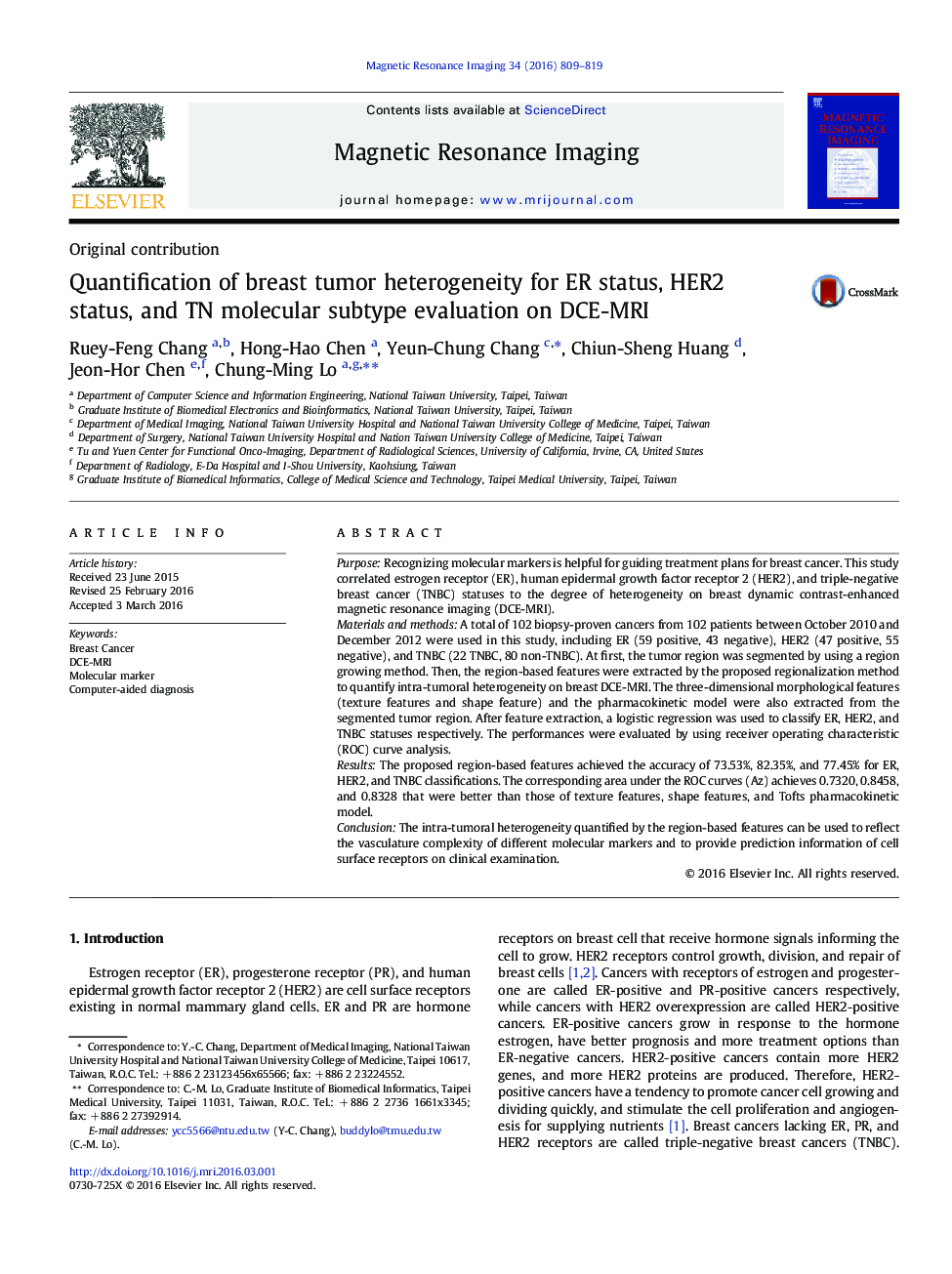| Article ID | Journal | Published Year | Pages | File Type |
|---|---|---|---|---|
| 1806142 | Magnetic Resonance Imaging | 2016 | 11 Pages |
PurposeRecognizing molecular markers is helpful for guiding treatment plans for breast cancer. This study correlated estrogen receptor (ER), human epidermal growth factor receptor 2 (HER2), and triple-negative breast cancer (TNBC) statuses to the degree of heterogeneity on breast dynamic contrast-enhanced magnetic resonance imaging (DCE-MRI).Materials and methodsA total of 102 biopsy-proven cancers from 102 patients between October 2010 and December 2012 were used in this study, including ER (59 positive, 43 negative), HER2 (47 positive, 55 negative), and TNBC (22 TNBC, 80 non-TNBC). At first, the tumor region was segmented by using a region growing method. Then, the region-based features were extracted by the proposed regionalization method to quantify intra-tumoral heterogeneity on breast DCE-MRI. The three-dimensional morphological features (texture features and shape feature) and the pharmacokinetic model were also extracted from the segmented tumor region. After feature extraction, a logistic regression was used to classify ER, HER2, and TNBC statuses respectively. The performances were evaluated by using receiver operating characteristic (ROC) curve analysis.ResultsThe proposed region-based features achieved the accuracy of 73.53%, 82.35%, and 77.45% for ER, HER2, and TNBC classifications. The corresponding area under the ROC curves (Az) achieves 0.7320, 0.8458, and 0.8328 that were better than those of texture features, shape features, and Tofts pharmacokinetic model.ConclusionThe intra-tumoral heterogeneity quantified by the region-based features can be used to reflect the vasculature complexity of different molecular markers and to provide prediction information of cell surface receptors on clinical examination.
